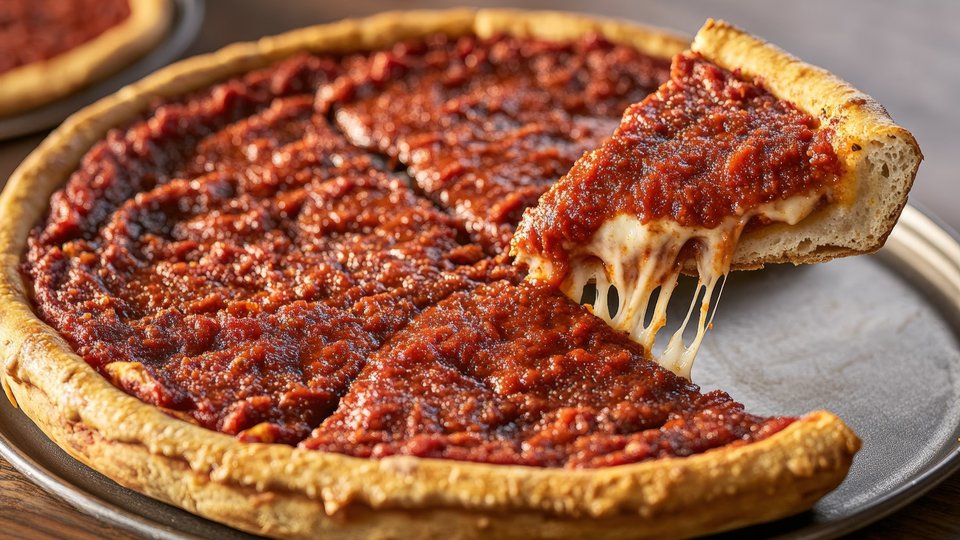Operations
Deep dishing on CX: how ordering ahead helps the customer experience
Businesses can delight customers and boost their bottom line by inviting customers to take small, mutually beneficial actions that turn a potential point of friction into a positive experience, as demonstrated by a deep-dish pizza restaurant's advance ordering system.

August 28, 2025 by Stacy McGranor — Chief Experience Officer, Blueprints & Playbooks
The best business innovations often hide in plain sight, masquerading as simple courtesies. Last week, during a visit to one of Chicago's legendary deep dish pizza restaurants, I experienced one of these brilliant moments—a seemingly small gesture that perfectly illustrates how smart businesses can simultaneously delight customers and boost their bottom line.
Lessons in excellence from pizza
Deep dish pizza is an art form that demands patience, often translating to a 45-minute wait from order to table — a reality that could easily frustrate hungry diners and create operational headaches for the restaurant. But here's one example of how to transform a potential pain point into a competitive advantage.
When I made our reservation, the restaurant extended an offer that changed everything: "To make sure your pizza experience is unforgettable, we suggest pre-ordering your pizzas ahead of time." Within the invitation, they provided a menu link and three ordering methods. This wasn't a pushy upsell or complicated process—it was presented as a service designed purely for our convenience and to "make our pizza dreams come true!"
The ordering process was remarkably seamless. A few clicks, a confirmation acknowledging our preferences, and we were set. When seated for our reservation, we confirmed our order, settled into our booth, ordered drinks and appetizers, and then, with perfect timing, our personally crafted pizza arrived — golden, bubbling, and exactly what we'd ordered hours earlier.
The result? We enjoyed our meal without the typical wait, savored every bite without feeling rushed, and left completely satisfied. Meanwhile, the restaurant turned our table faster, serving more customers throughout the evening and generating more revenue per table.
Why this strategy dishes so well
This approach succeeds because it addresses a fundamental truth about customer experience: people don't mind participating in processes that clearly benefit them. When businesses invite customers to take actions that serve mutual interests, three powerful things happen:
- Customers feel valued and respected. By offering advance ordering, the restaurant acknowledged that our time was precious. They weren't asking us to work harder; they were offering us a way to work smarter. This gesture communicated respect and built goodwill before we even walked through their doors.
- Operations become more predictable. Advance orders allow restaurants to better plan kitchen workflow, manage staff schedules, and reduce food waste. They can prepare orders during slower periods and have better visibility into upcoming demand. This operational efficiency translates directly into improved service quality and cost savings.
- Revenue opportunities expand. Faster table turns mean more covers per evening. Advance orders reduce no-shows and cancellations because customers have already invested time in the process.
The psychology behind win-win customer actions
The success of strategies like advance ordering lies in understanding customer psychology. People are willing to invest small amounts of effort when they can clearly see the benefit to themselves. The key is making that benefit obvious and immediate.
Customers also appreciate feeling like partners in the business process. When invited to order ahead, we weren't being treated as passive recipients of service — we became collaborators in creating our own superior experience.
Moreover, this approach builds trust. By clearly explaining how advance ordering benefits us while being transparent about the process, the restaurant demonstrated honesty and customer-centricity. This transparency strengthened our relationship with the brand.
Beyond restaurants
While this example comes from food service, this principle applies across industries. The most successful businesses identify friction points that affect both customer satisfaction and operational efficiency, then create solutions that address both simultaneously.
Consider how many clothing retailers now offer styling questionnaires that customers can complete online before shopping. Customers receive curated recommendations that save them time browsing and increase their chances of finding items they love, while retailers can better manage inventory, reduce returns, and increase average purchase values through more targeted suggestions.
Retail stores that offer "buy online, pick up in store" services let customers avoid shipping delays and out-of-stock disappointments while driving foot traffic and reducing fulfillment costs.
Service businesses that provide detailed intake forms before appointments can deliver more focused, valuable sessions while reducing consultation time and increasing client throughput.
Making it work for you
The most effective customer-beneficial actions share several characteristics: they're optional (never mandatory), clearly beneficial to the customer, simple to execute, and well-integrated into existing processes.
Start by examining your customer journey for moments where waiting, uncertainty, or inefficiency creates mutual pain points. Look for places where small customer actions could eliminate friction for everyone involved.
The implementation should feel like offering a valuable service, not shifting work to customers. Our pizza restaurant example didn't present advance ordering as a requirement or favor to them—they positioned it as a premium service designed for our benefit.
A challenge to consider
What areas of your business can you invite your customers to take an action that benefits them and your bottom line?
The answer might be simpler than you think. Sometimes the most profitable innovations are just creative ways to show customers you value their time, preferences, and partnership in creating exceptional experiences. The sweet spot lies in finding those moments where helping your customers help themselves creates value for everyone involved.
About Stacy McGranor
Stacy McGranor is the experience-obsessed founder of Blueprints & Playbooks, a Customer Experience consulting agency. With 15+ seasons across MLB, NBA, MLS, and NHL—including creating the first-ever Customer Experience function in professional sports—she takes inspiration from Nancy Drew and Curious George while harnessing her MBA and MS in Business Psychology to create experiences that make customers feel seen, valued, and eager to return.





